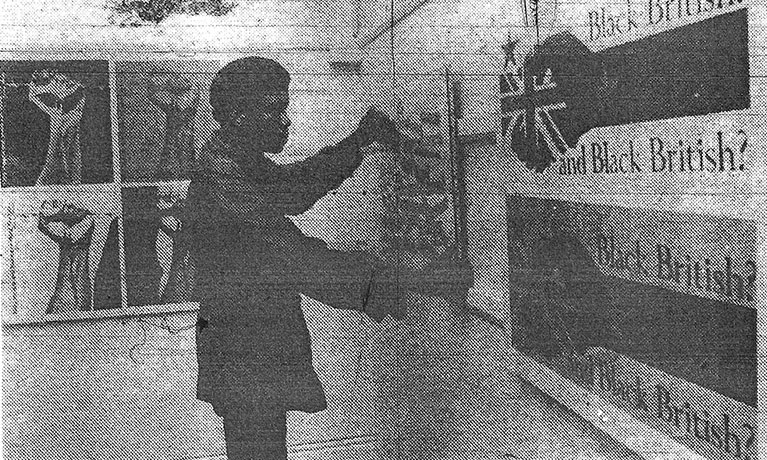
The Role of Visual Arts Organisations in the British Black Arts Movement in the Midlands
Project team
Carolina Rito, Principal investigator (CAMC)
Paul Goodwin, Co-investigator (University of the Arts London)
Collaborators
Coventry University (lead)
University Arts London
New Art Exchange
Wolverhampton Gallery
Herbert Museum and Art Gallery
Working group
Shaheen Merali
Marlene Smith
Ian Sergeant
Sylvia Theuri
Funder
UKRI- AHRC
Value to Coventry University
£20,060
Total value of project
£30,345
Duration of project
20 November 2021 – 19 July 2023


Project details
Project webpage: https://rovibam.co.uk/
The British Black Arts Movement (BAM) in the early 1980s was responsible for a paradigm shift in UK art history, bringing to the fore the issues, concerns, practices and aesthetics of marginalised artists. The systemic inequality in the representation of Black art history in Britain has come to the fore once more in the recent months, especially within debates around the killing of George Floyd in the US, the Black Lives Matter protests. However, the history of the BAM and the role of cultural organisations in its development in the Midlands remain understudied. In preparation for the 40th anniversary of The First Black Art Convention in Wolverhampton (1982), this project aims to revisit and promote the region's unique and exceptional legacy in the development of the Black art scene, with a special focus on the role of cultural organisations in supporting artists of colour in the Midlands since the 1980s. The network will explore the impact of the BAM in the region, and foster a change of attitudes in the cultural sector towards a more equitable scene by identifying the challenges faced by artists of colour today and proposing recommendations to cultural organisations, policy-makers and advocacy groups.
Project objectives
- To foster research co-operation on Black studies, art and curation between Coventry University, UAL, visual arts organisations and cultural practitioners in the region;
- To raise awareness of the unique and pioneering role of the BAM in the Midlands and relevance to the British art history;
- To share and exchange knowledge, specifically: 1) on the history of the BAM, its networks, the role of the visual arts institutions, the individuals involved; 2) histories of Black curation in the Midlands and the UK; 3) on the contemporary challenges for curators and artists of colour in the region and opportunities to flat discrimination;
- To act as a catalyst for embedding the relevance of the visual arts organisations in their identity, to articulate with confidence their role and why that is important;
- To act as a catalyst to increase these institutions' commitment to diversity and inclusion.
Impact statement
The network activities will benefit academics in the fields of visual arts, curating and Black studies; and non-academic audience working in the cultural sector and on non-for-profit organisations supporting artists of colour. The network activities include: two workshops 1) the first invites members of the BAM to explore the role of cultural organisations in the movement in the 1980s, providing new insights; 2) the second invites practitioners of colour to identify challenges and opportunities in the field for a more diverse and inclusive approach. The workshops will be followed by a public event to open the findings and recommendations to a wider public. The event will be recorded and disseminated via the project blog that will outlive the funded period to continue benefitting scholars and practitioners working in the fields of art history, curating, institutional practices, visual cultures, museum studies, visual arts, and Black studies. Following up on these debates, the network will produce an advocacy document with recommendations for a more equitable art programming, workforce and audience development in the cultural sector, which will be effectively disseminated to funding bodies and policy-makers (Arts Council England; Contemporary Visual Arts Network; Midlands Higher Education Culture Forum). In addition, a paper will be published in peer-reviewed academic journals to benefit other scholars in the field, disseminate new knowledge, and influence related debates.
Outputs
- Rito, C. and Goodwin, P. (2023) British Black Artists and Visual Arts Organisations in the Midlands
- Journal article (refereed)
- Website
- Performance, film or recording
- Expertise gained through the application of research in a non-academic environment
- 2 workshops
- 1 Event
Image: Newspaper cutting from Wolverhampton Express & Star, June 1981. © Wolverhampton Express & Star




